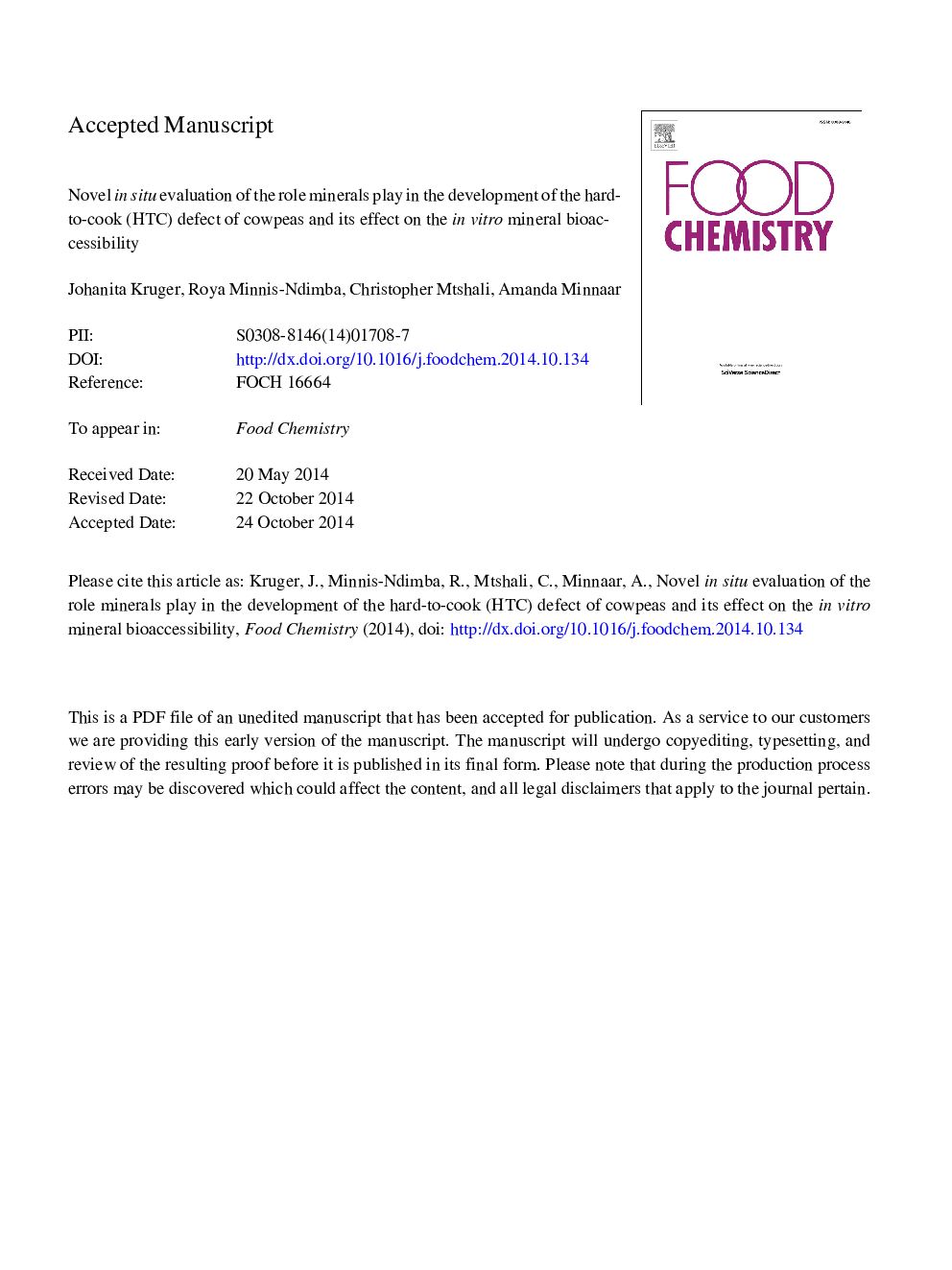| Article ID | Journal | Published Year | Pages | File Type |
|---|---|---|---|---|
| 7593740 | Food Chemistry | 2015 | 25 Pages |
Abstract
Cowpea is a nutritionally important drought-resistant legume in sub-Saharan Africa. It is, however, underutilised, in part due to the hard-to-cook (HTC) defect caused by adverse storage conditions resulting in seeds not softening during cooking. This study introduced a novel evaluation of the potential role that minerals play in the development of the HTC defect. The mineral distribution in the cotyledons of normal and HTC cowpeas were analysed by Proton Induced X-ray Emission (PIXE) spectrometry. The phytate, tannin and total phenolic contents were analysed together with in vitro mineral bioaccessibility. In HTC cowpeas, Ca and Mg were more concentrated in the cell wall-middle lamella area of the parenchyma cells. This, together with the reduction in phytate content, confirmed the 'phytase-phytate-mineral' hypothesis as a mechanism for development of the HTC defect. Despite the phytate reduction in stored cowpeas, the HTC defect decreased the bioaccessibility of Ca, Fe and Zn in cowpeas.
Keywords
Related Topics
Physical Sciences and Engineering
Chemistry
Analytical Chemistry
Authors
Johanita Kruger, Roya Minnis-Ndimba, Christopher Mtshali, Amanda Minnaar,
